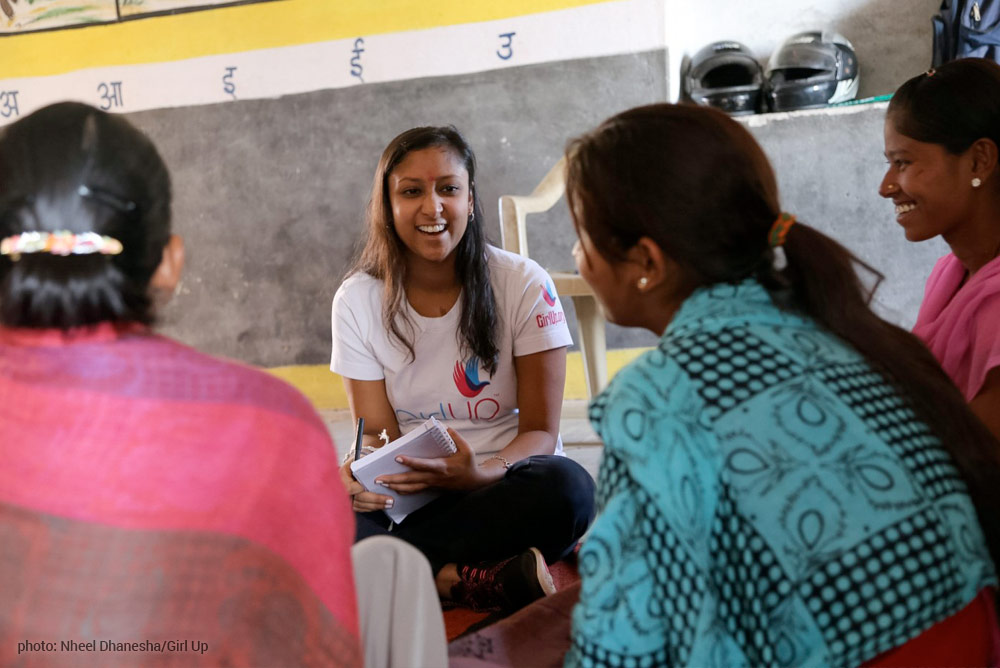I recently had the incredible opportunity to visit girls living in the Udaipur region in India, where Girl Up funds several UN-supported programs. Speaking to a large group of girls at a program in one of the remote villages we visited, I looked out at the 30 eager, curious faces in front of me and asked what I thought was a simple question: “How many of you are still in school?” Only two hands went up. I wish I could say that this was unique to this area or these girls, but sadly it’s a story we encountered as we visited other villages. It’s also what we see in all of the countries where Girl Up supports UN programs for girls. In fact, there are 62 million girls out of school worldwide.
But we now have renewed hope for these girls. Earlier this year the leaders of the world gathered to adopt the Sustainable Development Goals, sending a resounding message that we, as a global community, cannot succeed without equal access to education for ALL. And earlier this month here in the United States, Secretary of State John Kerry issued a global strategy to empower adolescent girls, with access to education as one of the primary pillars of the strategy.
Investing in girls’ education isn’t just the right thing to do, it’s the smartest thing we can do for the world. Study after study shows that girls are the key element in transforming their communities, their countries, and our world. According to a Brookings report, 65 low- and middle-income countries lose approximately $92 billion each year from their failure to educate girls to the same standards as boys. Furthermore, UNESCO found that increasing the percentage of women who complete their secondary education by just one point can boost the country’s annual per capita income growth by an average of 0.3 percentage points.
At Girl Up, we know the ripple effects of educating girls are immeasurable, so helping to ensure that ALL girls have the opportunity to pursue a quality education is a core component of our mission. Educated girls are healthier, economically independent, and become empowered leaders.
In the future, I hope to return to that village in India and ask that same question of the next class of girls in the program. I look forward to the day when every hand in that room is raised. Girls are THE most powerful force for change in the world, but they need to be given the chance to succeed. That starts with an education. And most immediately, we look to the International Commission on Financing Global Education Opportunity to confront this financing challenge and offer sustainable solutions.
Melissa Kilby is the Director of Girl Up, the United Nations Foundation’s adolescent girl campaign.


Comment
This is encouraging. I would like to know where I can access the Girl Up, in Nigeria.
I am a teacher and would be willing to help girls in Northern Nigeria.